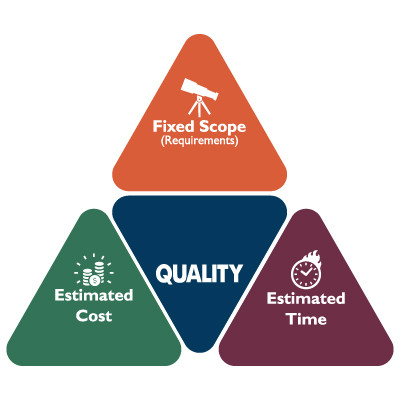What goes through your head when you hear the words “IT audit?” Are you worried about your business’ deepest and most shameful technology secrets being exposed, or are you excited about the opportunity to resolve issues that you might not even know exist? We hope you have the latter mentality, as it’s the appropriate one—especially if you want to build a business that stands the test of time.
JensenIT Blog
Your business’ relationship with IT has a direct correlation to how well it operates. If your technology fails, your business suffers productivity losses, as well as financial ones due to decreased reliability in the eyes of customers and clients. One of the best ways to ensure you’re following through on the promises you make to your customers is to implement a proactive IT strategy to replace the reactive approaches seen in the past.
Business leaders and decision makers have plenty to deal with… and that’s before factoring in all the problems and obstacles that pop up over the course of their normal operations, particularly when it comes to the technology their businesses rely on.
Naturally, a smart business owner would want their technology to be as reliable as possible, available without requiring conscious effort. As it happens, one of the modern options for IT support enables circumstances to be as close to this ideal as possible… but the other predominant option ultimately gives you more to worry about.
Deals are great, aren’t they? Offering some money and getting more than you’d expect in return… It’s the next best thing to free. It’s also really nice to get something fast.
Not so fast, though. As nice as they can make things seem, “cheap” and “quick” aren’t often synonymous with “effective” or “valuable.” In fact, selecting the presumably easy route regarding your business technology can ultimately lead to bigger problems in the form of something called tech debt.
Third-party vendors are essential for modern businesses, as they deliver mission-critical resources and tools to the organizations that utilize them, including raw materials, software, and other services. Unfortunately, these vendors can also serve as direct lines into your business for a cyberattack to take advantage of for their own purposes.
Let’s talk a little about how you can still lean on your vendors without sacrificing your all-important security.
There are, plainly and simply, too many ways that a modern small or medium-sized business can experience an issue that puts their IT out of commission in one way or another. Each one can hit one of these businesses particularly hard in the wallet.
Let’s review some today and discuss how they can be resolved.
Running a small or medium-sized business means juggling countless priorities. You're focused on your customers, team, and bottom line… but what about the technology that powers it all?
Often overlooked, your IT infrastructure is far more than just the computers on desks. It's the complex web of network equipment, essential software subscriptions, cloud services, and even the personal smartphones and tablets your employees use for work. Keeping this entire ecosystem running smoothly and securely is a significant challenge for many SMBs.
Do you ever feel at home in your business’ server room? That is, assuming you have a server room, and it’s more than just a stuffy closet in an isolated part of your office. If you’re not confident that you can provide your servers with the management, maintenance, and monitoring they need, we recommend you work with a managed IT company to ensure you get the most value you can from your server units.
There is a concept known as the iron triangle that provides a simple framework for project management by outlining the balance between your costs, your available time, and the desired quality of your outcome.
Traditionally, the iron triangle helps illustrate how these factors impact each other. Instead, we wanted to take advantage of the principles of the triangle to explore how beneficial it can be to outsource IT services.
The big thing in business computing is AI, or artificial intelligence, and businesses are implementing it to solve a lot of repetitive problems that free up their employees to serve other roles. One such area is for IT support. But is it worth it to chat with a robot when something as important as IT is on the line?
Every business relies on technology for at least part of its operations. This means that every business—particularly those with operations that make IT an essential part of the process—will need access to some form of IT support.
For most small and medium-sized businesses today, managed IT is the best option. Let’s discuss a few reasons why this is.
There's a lot of pressure on (often understaffed and overworked) internal IT teams to manage and maintain increasingly complex systems. For businesses noticing signs of strain on their IT staff, seeking assistance from managed services providers (MSPs) could be the remedy. Here's how an MSP like us can alleviate the pressure and contribute to workplace wellness for all.
For any business to succeed, it needs to exhibit some degree of empathy toward its audience. Otherwise, the services and products they offer will be less likely to meet the priorities and needs that its targets are experiencing.
As a managed service provider, this is perhaps most true of us, as our services revolve around predicting the needs of our clientele and resolving them… ideally, before the client even realizes they have a need to fulfill.
The cloud has enabled managed IT service providers, or MSPs, to fill a uniquely shaped void in many companies’ business models. Working with a managed service provider can make up for all of the traditional challenges of technology maintenance and management while also affording you unique opportunities to reduce costs, minimize waste, and maximize productivity.
In good times and bad, profitability is the priority for most businesses out there. Having said that, this priority is typically a challenging one to achieve, but did you know that there are a few different ways that investing in a relationship with a managed service provider can help increase your productivity—and as a result, your overall profitability?
Business technology is a useful tool, there’s no way around it. Unfortunately for businesses, technology has to be replaced every so often. Even if the technology doesn’t break, there are innovations made that can help your organization do what you do better. The thing is: Technology does break, so you need to understand how to get the most value out of it when it is working.
Let me ask you a question: is there anything in your office that doesn’t rely on technology in some way, shape, or form (and no, the old coffeepot that makes the perfect cup doesn’t count)? Increasingly, the answer to that question is “no.” Let’s review how much the average business nowadays relies on IT to really reinforce how ubiquitous technology has become.
We throw the term “best practice” around a lot… enough that, without an appreciation for what the term actually means, it can start to sound like just another buzzword that the IT guy is using to sound more impressive. We assure you that this is not the case, and that the term “best practice” actually does mean something.




















